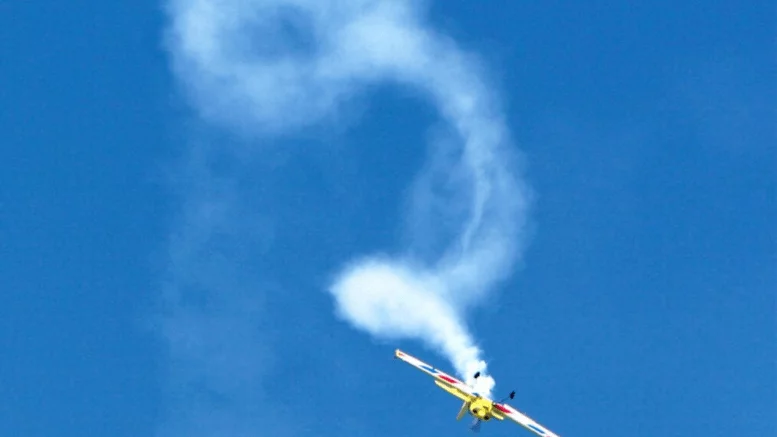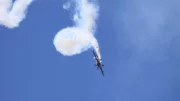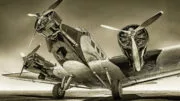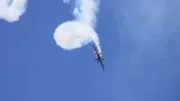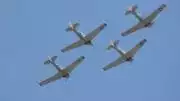A Beginner’s Guide to Aerobatic Maneuvers
Aerobatic maneuvers are the heart of any thrilling airshow, showcasing the precision, skill, and daring of pilots as they perform spectacular flips and tricks. These maneuvers not only captivate audiences but also highlight the extraordinary control and bravery of aerobatic pilots.One way to better appreciate the kind of skill a professional air show displays is to become familiar with the various aerobatic maneuvers and techniques of aerobatics.
Understanding Aerobatic Maneuvers
Aerobatic competitions usually involve compulsory figures, which are closely governed and restricted by a specific set or rules. These must take place within a tight section of airspace called “the box.” The precision of the figures are then scored by specifically trained judges.
Common Types of Aerobatic Maneuvers
1. Spins
Spins seize one of a pilot’s biggest enemies while in the sky—a stall—and transforms it into a spectacular, Instagram-friendly maneuver. While an accidental spin can all too easily become fatal, a controlled, intentional spin is a popular feat which demonstrates courage and mastery of not only control of the airplane, but of the natural disorientation which takes place while corkscrewing towards the ground.
Aerobatic pilots execute spins safely by choosing a point of reference on the ground, much the way a figure skater or ballet dancer finds a spot in the theater or arena to look at before beginning a series of fast turns. By reducing power during level flight and gently pulling up the nose and closing the throttle, an aerobatic pilot begins his or her spin maneuver.
The most important aspect of this move is that the pilot pulls back the stick before the airplane stalls, thus remaining in control. Doing so allows him or her to apply the rudder in the opposite direction of the spin. The pilot then allows airspeed to rebuild, and introduces more power once the nose is level. All movement with the stick must be undertaken smoothly and calmly, or the pilot could find him or herself in an unintentional stall.
2. Aileron Rolls
Many pilots, even if they are not professional air show or aerobatic aviators, are fond of aileron rolls as one of the first aerobatic maneuvers they are able to master. Aileron rolls are similar to spins in that they rotate the airplane 360 degrees, but the action takes place along the center axis, which is also called the longitudinal axis.
If you have trouble differentiating rolls from spins, remember “roll” as one of the three axes of flight—this is the plane along which the aircraft “rocks” back and forth across the length of its wingspan, with one wing tipping up while the other drops the opposite direction. Put another way, aileron rolls take place along the roll axis.
An aileron roll is accomplished by the pilot focusing on the horizon, rather than the ground, as is the case with beginning a spin. He or she then pulls the stick as far as it will go to the side. Most aerobatic pilots spin their airplanes to the left. Timing is crucial in ending an aileron roll; the pilot exits the aerobatic maneuver as the wings of the airplane begin to return to parallel with the horizon. Correctly done, aileron rolls do not result in drops or lifts in altitude.
3. Loops
When the general public thinks of aviation aerobatics, loops are usually one of the first aerobatic maneuvers which come to mind. Loops are another skill which aerobatic pilots add to their resumes early in their training. Precision pilots learn a great deal while perfecting loops. They gather experience in withstanding g forces, controlling the airplane while upside down or facing the horizon and ground at awkward angles, and working with airspeeds that change quickly—not to mention in front of an audience.
While a loop is also a 360 degree turn, like an aileron roll, the shape of it is much larger. Executing loops as an aerobatic team requires a great deal of practice and careful timing. Loops make the most of the natural pull of gravity. Aerobatic airplanes generally contain equipment which measure the force of gravity acting upon the craft and its pilot.
Loops usually push pilots back in their seats with 3.5 to 4 gs. At the top of the loop, however, the pilot enjoys a few seconds of weightlessness as the front part of the airplane tips forward and airspeed begins to rebuild. Rudder pedals might be employed to keep the airplane on track with a point of reference.
4. The Herbst Maneuver
The Herbst Maneuver, sometimes also known as “J Turn,” is an example of a more advanced and jet-only feat which only the modern era of super-maneuverable airplanes has made possible. This aerobatic maneuver is set apart from most other airshow showstoppers in that it’s more than just an impressive display of piloting for a Saturday afternoon crowd—it could save a pilot’s life in aerial combat.
Only experienced fighter pilots who have mastered such skills as loops, rolls, spins, and more advanced techniques will attempt to add a Herbst Maneuver to their arsenal. Such spectacular motions weren’t even imaginable until the advent of post-stall technology, and the first one wasn’t performed until 1993.
In a Herbst Maneuver, the pilot changes direction quickly while flying up and away from an enemy aircraft. While flying at a high rate of speed, the pilot steeply and suddenly increases the airplane’s angle of attack; the trick here, however, is that the airplane decelerates at the same time. As the airplane stalls, the pilot continues increasing the attack angle, and thrusters are employed to reassert control. At the same time, the airplane begins to roll. Once the “stall” is recovered, the airplane zooms off in a different direction of flight, usually the opposite of which it came.
The first Herbst Maneuver took place in an X-31, but now can be accomplished in any high performance military craft which employs thrust vectors. The phrase “turn and burn,” is an excellent illustrator of the Herbst Maneuver.
Ready to Soar with Us?

